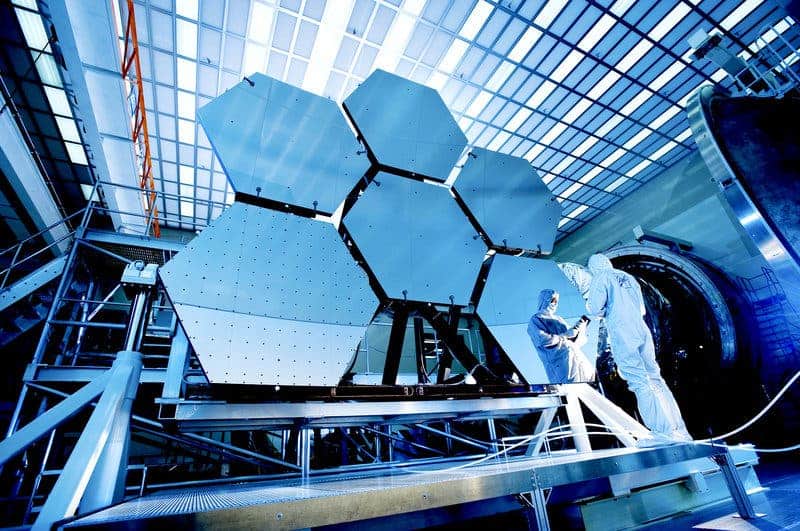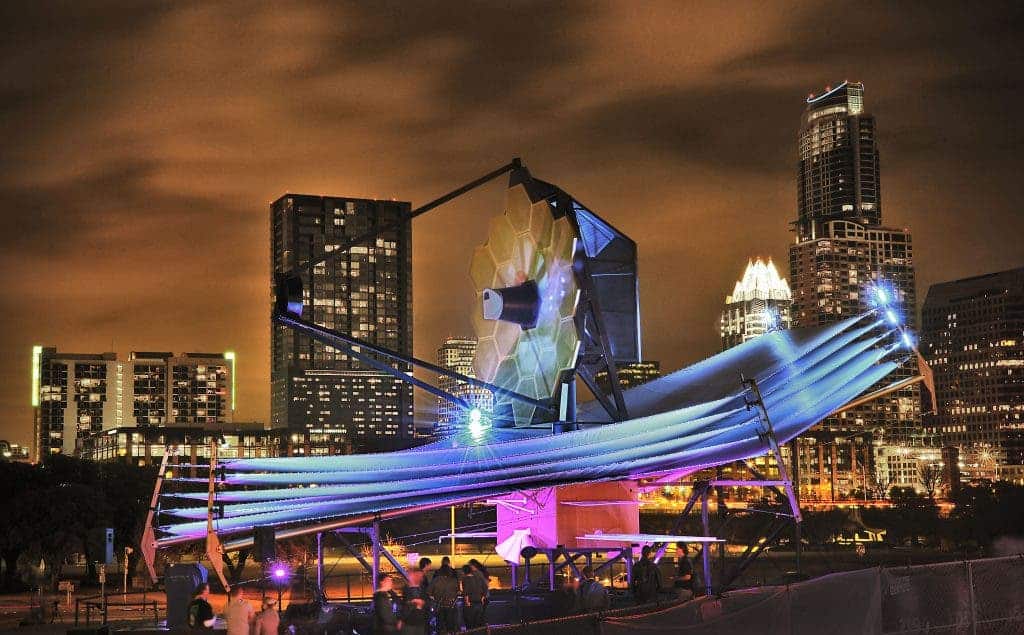NASA is very close to reaching a milestone in the construction of the James Webb Space Telescope (JWST), Hubble’s successor that will be launched in 2018.

David Higginbotham/Emmett Given/MSFC/NASA
Engineers have almost completely assembled the giant mirror, with a collecting area about five times larger (25 square meters) than Hubble’s – despite being twice as light. When complete, the mirror will look like a giant satellite dish – one that’s two stories high.
“So far, everything — knock on wood — is going quite well,” says Bill Ochs, the telescope’s project manager at Goddard Space Flight Center in Maryland.

This has been the fastest and most cursive part of the building schedule in what was otherwise a project with many hurdles and delays. This isn’t unexpected though. When Hubble’s construction started in 1972, it had an estimated cost of $300 million – but when it finally went in space in 1990, it cost four times more. But just like Hubble was revolutionary (and still is), so too will James Webb be.
The largest NASA astrophysics mission of its generation, JWST will offer unprecedented resolution and sensitivity from long-wavelength (orange-red) visible light, through near-infrared to the mid-infrared. It will be able to capture light from the first stars and galaxies in the Universe, from billions of light years across.
It will also probe the atmospheres of potentially habitable planets, providing more information on their habitability. It’s bigger and better.
“Every time we build bigger or better pieces of equipment, we find something astonishing,” he says.

Unfortunately, the construction of something so large and innovative is bound to have some delays and cost extensions. The first estimates suggested the observatory would cost $1.6 billion and launch in 2011. Now, NASA has scheduled the telescope for a 2018 launch and that seems to be well on track. They even have a generous margin for an October 2018 launch.
“We keep our fingers crossed, but things have been going tremendously well,” said Nasa’s JWST deputy project manager John Durning. “We have eight months of reserve; we’ve consumed about a month with various activities,” he added.






